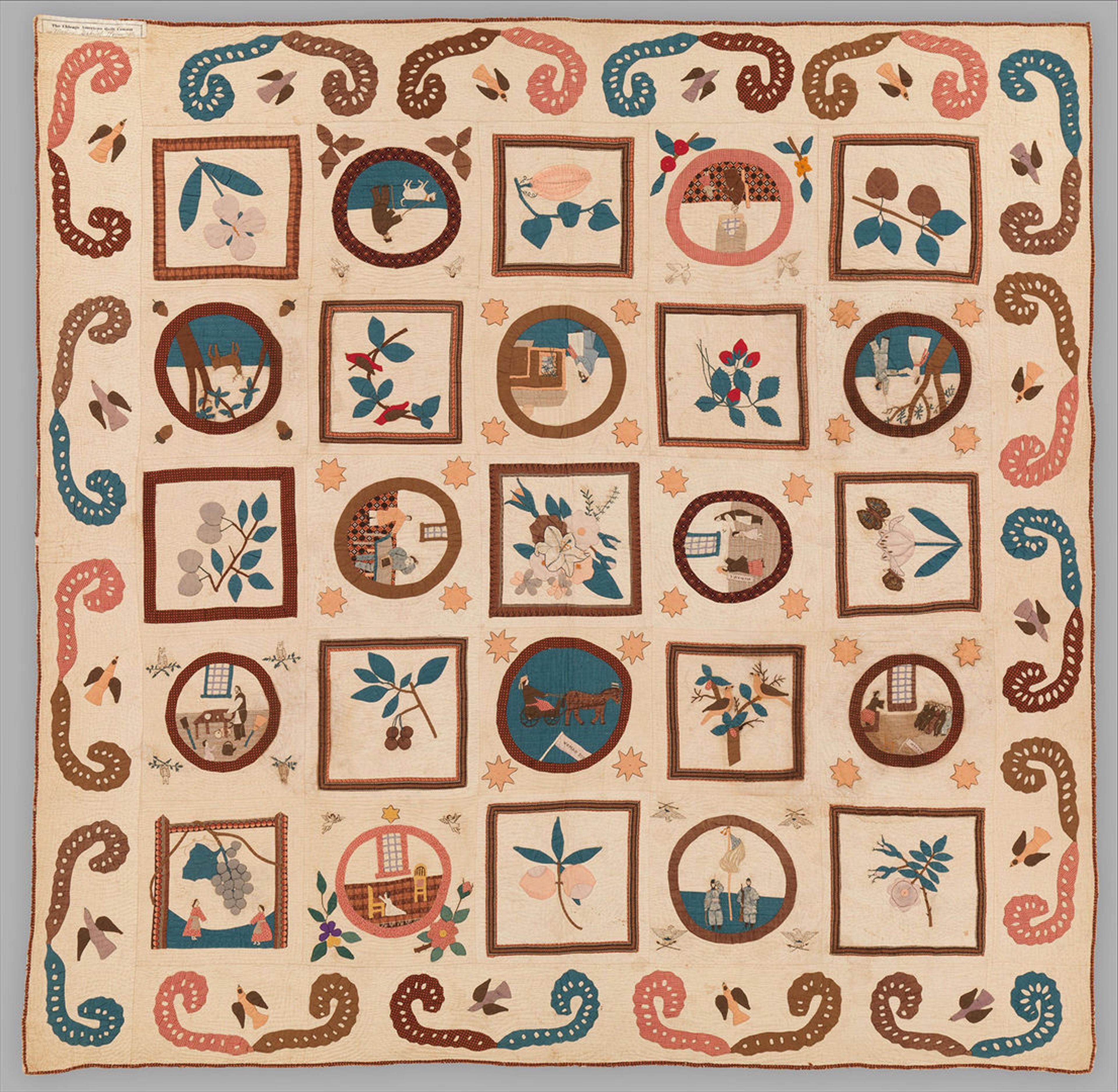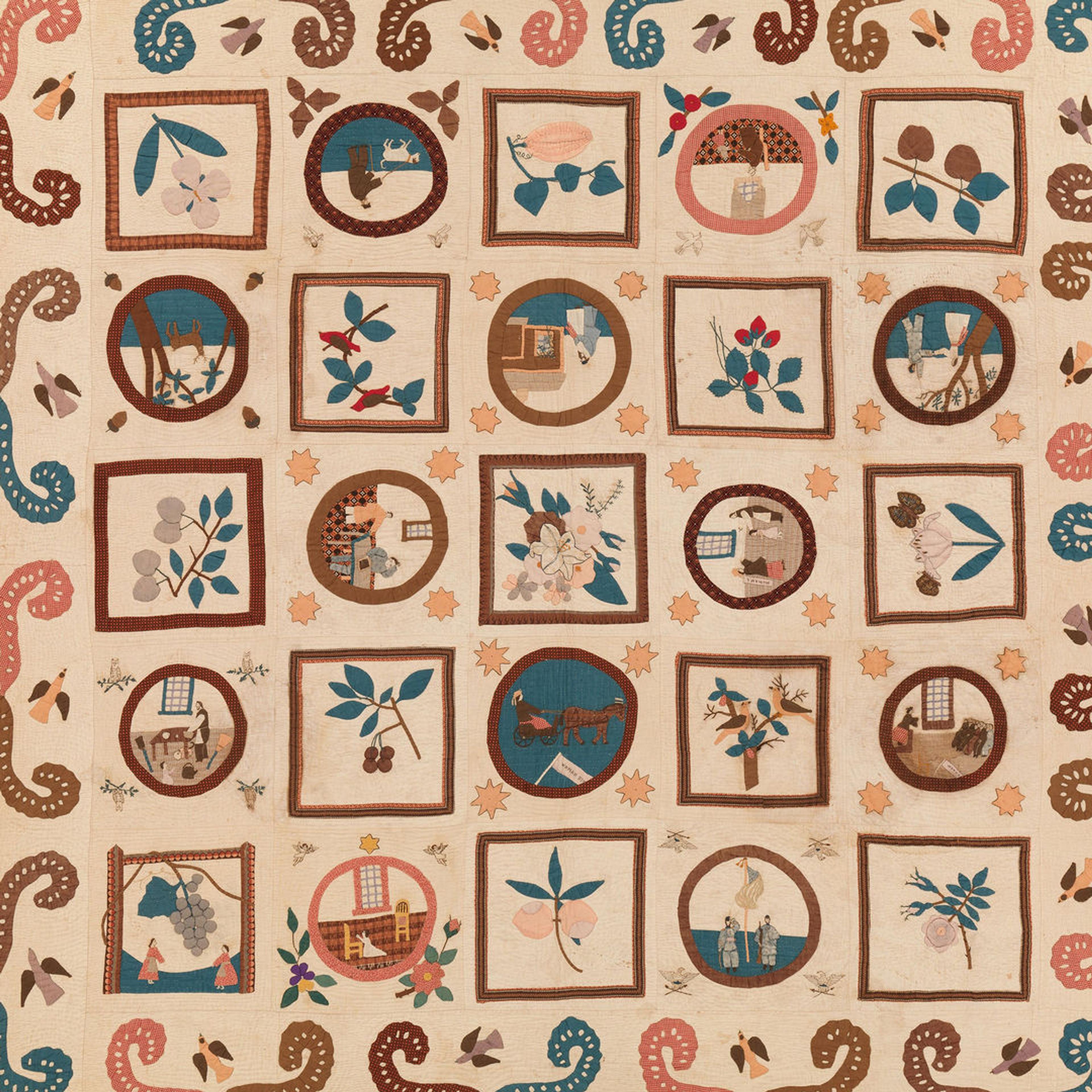When you imagine a truly “great” work of art, what comes to mind?
Perhaps a massive oil painting in a gilded frame, or a carefully chiseled marble bust. Met curator Amelia Peck shares that before most women had the resources to pursue sculpting or painting, they channeled their creative energies into an art form they could pursue in their own homes: quiltmaking.
Museums Without Men: Emma Civey Stahl
Listen to the conversation, or read the full transcript below.
Transcript
KATY HESSEL: When you imagine a truly “great” work of art, what comes to mind? Maybe an immense painting in a gilded frame or a carefully chiseled marble bust. But to Amelia Peck, great art spans far beyond those conventional mediums…
AMELIA PECK: I have a much broader view of what art is. It doesn’t have to be a painting and it doesn’t have to be a sculpture. It can be a quilt. It can be all sorts of things that women traditionally worked on and that, in their way, are masterpieces.
HESSEL: Before most women had the resources to purchase hunks of marble or take painting lessons, they channeled their creative energies into an art form they could pursue in their own homes: quiltmaking. Curator Amelia Peck is dedicated to showcasing the often-overlooked craftsmanship of these women makers. One work in The Met’s Antonio Ratti Textile Center, the Woman’s Rights Quilt by Emma Stivey Stahl, holds particular significance for Amelia.

Emma Civey Stahl (American). Woman’s Rights Quilt, ca. 1875. Cotton, 70 × 69 1/2 in. (177.8 × 176.5 cm). The Metropolitan Museum of Art, New York. Funds from various donors, 2011 (2011.538)
PECK: This is really, in the quilt world, a pretty famous piece.
And I always think this is almost like a cartoon, that the quiltmaker is interested in women’s rights. She’s certainly putting a lot of effort into making this case of this woman, but she’s ambivalent.
HESSEL: The quilt depicts carefully rendered scenes of an American mother participating in the women’s rights movement. The details are incredible and they reveal a lot about the opinions of the woman who made it. Amelia points to a particularly fascinating scene on the quilt…
PECK: Here we have our lady with the banner “Woman’s Rights” slung over her shoulder and she’s telling her husband and her daughter that she’s going off to do this… And here’s the husband taking care of the house without the woman. Clearly things are falling apart. There’s a tea kettle on the floor. The child is sitting on the floor, maybe begging for something. The dog is eating off a plate on the floor. So the husband is having a hard time coping with taking care of the house while the woman is away. You know, she’s got the husband being sort of victimized, being left at home and the house in chaos.
So this is showing the attitudes of a woman in the 1870s who may be for women’s rights, may not be for women’s rights. So textiles, American textiles for sure, often you can decipher amazing stories from them, and that’s what really keeps me interested in them. They are really important for the study of day-to-day life.
###
This audio tour is one in a series of tours called Museums Without Men produced by Katy Hessel in collaboration with institutions across the globe, such as the Fine Arts Museum San Francisco, the Hepworth Wakefield, the Hirshhorn Museum and Sculpture Garden, and Tate Britain. The series encourages museum visitors to seek out work by great women and gender non-conforming artists in these institutions who, simply by virtue of their gender, were often overlooked and underrepresented.
